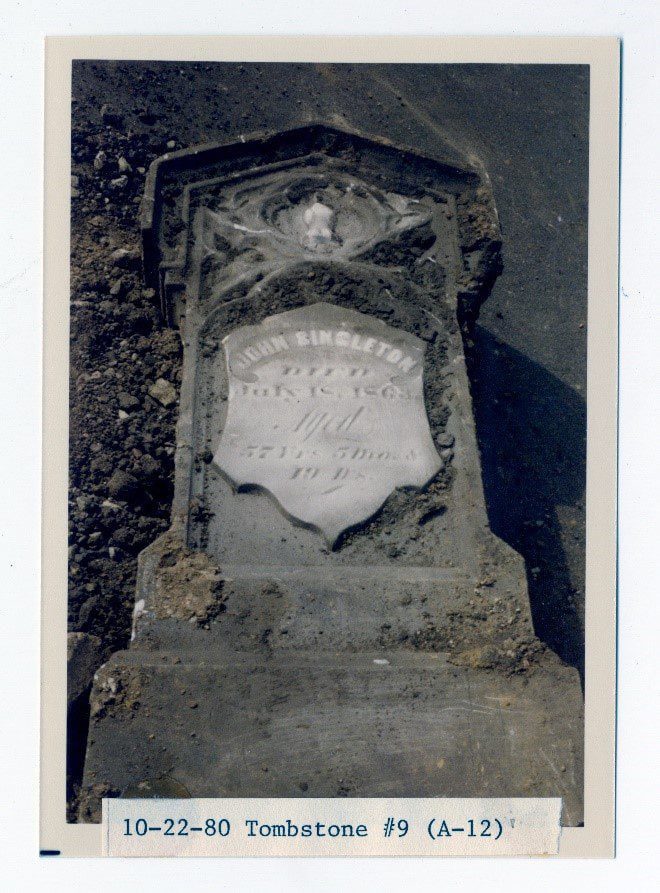
City officials and historians are at odds over how to proceed at a site on the southwest side of downtown that was once the location of Greenlawn cemetery. The exact number of remains, if any, is unknown, but historians believe the area could be the largest Black cemetery in the state.
The city is looking to form a community group of residents and local historians to gather input before moving forward on a bridge expansion project in the area of the former Greenlawn Cemetery, said Deputy Mayor Judith Thomas.
But the project could disturb an area where African Americans were buried throughout much of the 1800s, said historian Leon Bates.
The city performed soil borings when testing for bridge support and found no human remains, said Brandon Herget, the director of the Department of Public Works.
Most testing for human remains has been completed. The city is committed to the timeline based on contractual agreements and construction will move forward, Herget said.
“Our intent as we move forward is … thinking about the scope of excavation, what the impact to the site might look like as we move construction,” Herget said. “So, we’re committed to looking at and revising as best we can the scope of what that excavation may look like to minimize the impact.”
But many people interested in the site are not convinced it is safe to move forward.
More on Greenlawn Cemetery
It is easy to overlook the parking lot behind Lucas Oil Stadium and the overgrown dirt patches before the White River beyond it, but for many, it is hard to forget the history that lay below the dirt and concrete along the far west end of downtown’s Mile Square.
Bates said some graves on the site have washed out due to rain and flooding throughout the years, and others were relocated to other cemeteries.

However, four other expansions as recently as the 1980s have uncovered artifacts of the once remnant cemetery, including a casket handle, forgotten gravestones and corpses. What is still below the concrete and what remains can only be estimated and pieced together through word of mouth and the little historical records that remain.
In the event that the city discovers human remains or artifacts, Indiana law requires that work within 100 feet be halted immediately.
The Indiana Department of Natural Resources’ Division of Historic Preservation and Archaeology is responsible for overseeing the archaeological work and would be notified within two business days of a discovery, according to the Indiana Code.
City officials said they are committed to transparency and receiving community input moving forward so that the history of Black Hoosiers and Greenlawn Cemetery can be remembered and preserved. “Given that there are diverse viewpoints on what makes the most sense for the site and the impact to burial grounds, anything is possible, but I don’t know that there’s a universally held belief on what is the right decision,” said Herget.
The Story Within
Greenlawn Cemetery was established in 1821 as part of the original layout of the City of Indianapolis. It was once the burial place of thousands of pioneers, Union soldiers and Confederate prisoners of war, according to the Genealogical Society of Marion County.
Towards the back of the cemetery, on the far west end, was a segregated section where African Americans were buried. Although many graves were either washed away or disinterred and relocated, historians believe that artifacts could still be beneath the surface and want to be certain of this before anymore history is forgotten or erased.
“The right thing would be to do the entire cemetery, but my position is strictly related to the four acres that I want them to excavate,” said Eunice Trotter, the director of the Black Heritage Preservation Program for Indiana Landmarks.
There has never been a dedicated archeological dig to the area other than bits and pieces of excavations during expansion projects. Developments, expansions and lost records make it impossible to estimate the exact number of graves, their location and the identity of who may be buried there. The development of the area has changed and expanded since the cemetery closed in the 1890s, and historians are worried that artifacts may be deeper than what the city is currently exploring.

While many graves were relocated after the closure of Greenlawn, not everyone interned was relocated, Bates said.
Many buried there included infants and children, Trotter said.
Historians estimate that in the 1850s Black infant mortality rate was 1.6 times higher than white infant mortality. Because of the potential that infants remain in the cemetery, Trotter said she would like to see a meticulous dig by shovel and hand with Black historians on site.
“The city is trying to do the right thing, and we appreciate that,” Trotter said. “Now we’ve got to carry out what the right thing is.”
Contact staff writer Jayden Kennett at 317-762-7847 or by email jaydenk@indyrecorder.com. Follow her on Twitter @JournoJay.




